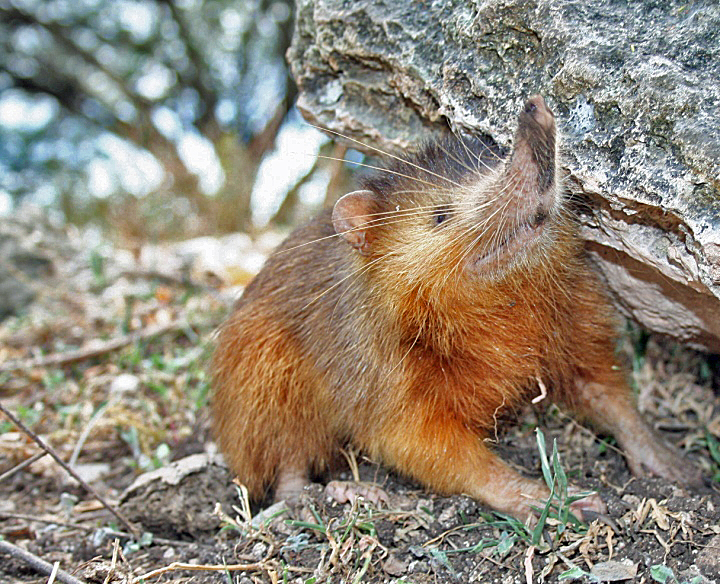Hispaniolan solenodon
(Solenodon paradoxus)

Description
The Hispaniolan solenodon (Solenodon paradoxus), is a solenodon endemic to the Caribbean island of Hispaniola (shared by the Dominican Republic and Haiti). It was first described by Johann Friedrich von Brandt in 1833. A similar but smaller species, Marcano's solenodon (S. marcanoi), once lived on the island, but became extinct after European colonization. Along with the often sympatric Hispaniolan hutia (Plagiodontia aedium), it is one of two extant native land mammals on Hispaniola. In 1833 the Russian Academy of Sciences received a new specimen from Haiti. Puzzled by the animal, curator Johann Friedrich von Brandt named it Solenodon paradoxus. (Solenodon means "grooved teeth".) No more information was known other than a relation to the Cuban solenodon (Atopogale cubana) discovered in 1861, and it was believed to be extinct. Addison Emery Verrill and Alpheus Hyatt Verrill rediscovered the animal in the Dominican Republic in 1907, but by 1964 it was again believed extinct. The Hispaniolan solenodon resembles an oversized shrew; males and females are similar in size. Adults measure 49 to 72 cm (19 to 28 in) in total length, including a tail 20 to 25 cm (7.9 to 9.8 in) long, and weigh about 800 g (28 oz) on average. This makes them the largest extant members of the Soricomorpha. Although they are somewhat variable in colour, they are typically dusky brown over most of the body, with a paler underside and reddish fur on the sides of the head, throat, and upper chest. The tail, legs, snout, and eyelids are hairless. The forelegs are noticeably more developed than the hind legs, but all have strong claws useful for digging. The head is large in relation to its body, with a long rostrum and tiny eyes and ears partially hidden by the body fur. The nostrils open to the side and the snout has about a dozen long whiskers, up to 7 cm (2.8 in) in length, with a few smaller whiskers further back on the head. A unique feature is the os proboscidis, a bone extending forward from the nasal opening to support the snout cartilage; this is not found even in other solenodons. The second lower incisor has a narrow tubular channel that is almost entirely enclosed, through which flows a venomous saliva secreted by the submaxillary gland. Although the exact chemical composition of the venom is unknown, injection of 0.38 to 0.55 mg of venom per gram of body mass has been shown to be fatal to mice in two to six minutes.
Taxonomic tree:







